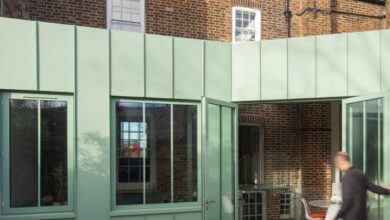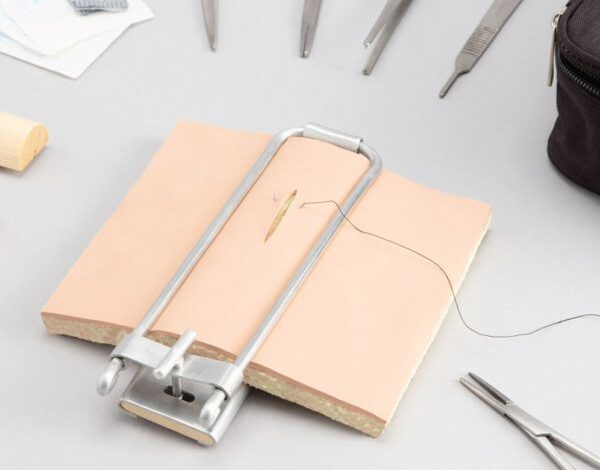
Brunel University spotlights 10 design student projects
[ad_1]
Dezeen School Shows: a sound monitoring system that protects users from noise exposure is included in Dezeen’s latest school show by students at Brunel University.
Also included is a device that monitors pets while their owners are away from home and a body heater that keeps users warm as they dry off after a shower.
Institution: Brunel University
School: Brunel Design School
Courses: Product Design, Product Design Engineering, and Industrial Design and Technology
Tutors: Yanmeng Xu, Federico Colecchia, Joseph Giacomin, Vanja Garaj, Nadarajah Manivannan, Hua Dong and Arthi Manohar
School statement:
“The BSc/MDes Product Design Engineering degree at Brunel University London has been designed for creative thinkers who are comfortable with a deeper analysis of functional and technical design challenges.
“The course has a traditional hands-on and practical approach that principally focuses on industrially-manufactured products and spans across design and engineering topics.
“The programme has been recently accredited by the Institution of Engineering Designers (IED) and is available as a three-year BSc or a four-year MDes master’s degree, with an optional year of placement or international exchange.
“The Industrial Design and Technology BA (Hons) programme at Brunel University London aims to produce graduates who are creative, curious, ethical and proficient.
“Throughout their journey at the Brunel Design School, they become empathetic designers who weave creative thinking with technology and are confident in framing problems and defining design opportunities.
“They are encouraged to iteratively explore solutions to current and future challenges and develop models and prototypes to communicate their vision and prove the practical design principles.
“Professional practice placements and industry engagement in the design studios also help prepare our students for future employment across a wide range of design industries and markets.”
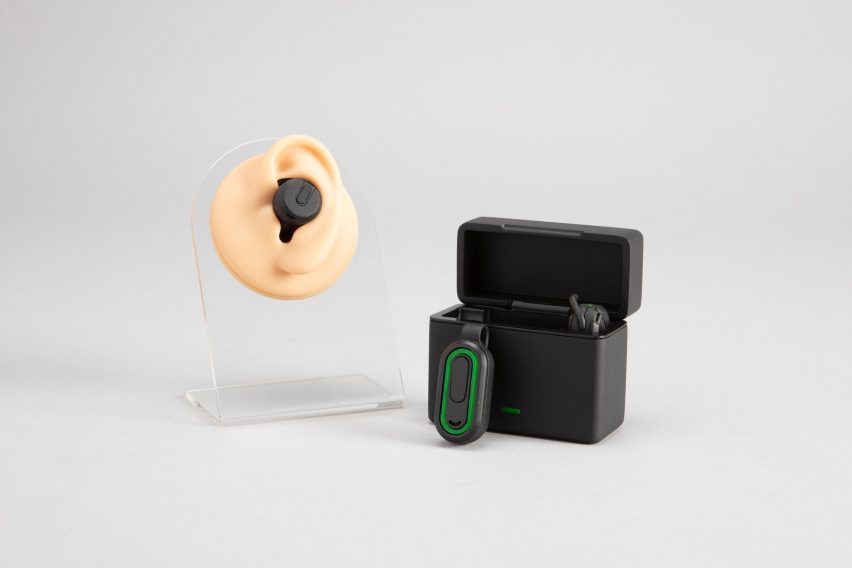
SafeSound by Rajiv Mistry
“High noise exposure is well-documented as an occupational hazard that can lead to hearing loss. Many industries, such as construction, have measures to ensure worker safety – the same cannot be said for public environments.
“The increase in recreational noise exposure and higher noise environments is believed to put 1.1 billion young people at risk of noise-induced hearing loss. Urban commuters are exposed to these loud noises daily, with many unaware of the risks.
“SafeSound is a monitoring and protection system that informs users of their noise exposure and provides personalised strategies to maintain hearing health.
“The earbuds monitor the sound levels coming from the user and their surrounding environment. The pod is an external microphone that continues tracking when the earbuds are not being used.
“An app provides data visualisation of the user’s sound exposure, providing insights into their hearing health and habits, and it can perform a calibrated hearing test using the earbuds.”
Student: Rajiv Mistry
Course: Industrial Design and Technology
Tutor: Vanja Garaj
Email: mistry1477[at]gmail.com
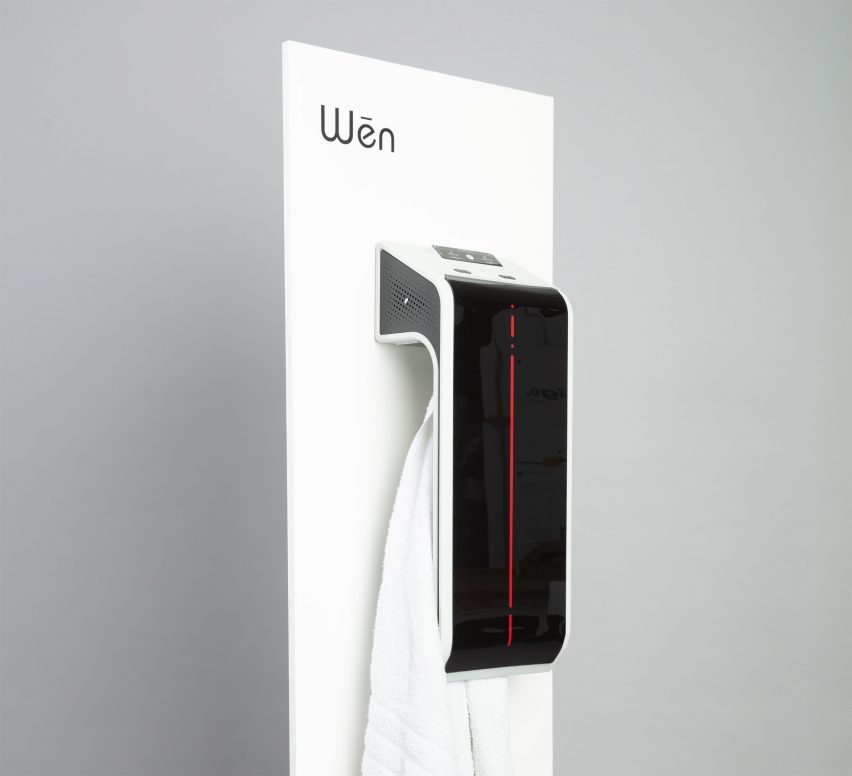
Wēn by Mengwei Ting
“Wēn is a body heater designed to provide immediate and targeted warmth after showering, addressing the pressing issue of unbearable post-shower cold experienced by 98 per cent of users, as revealed in primary research.
“It offers a seamless transition of warmth from the shower to drying off, mitigating prolonged heat-up times, exorbitant costs and sustainability concerns associated with traditional bathroom heaters.
“By harnessing the power of far-infrared heating technology, Wēn radiates soothing and harmless heat directly to the body to ensure optimal thermal comfort. Heating is focused on the torso, which is the most sensitive area to temperature changes.
“Wēn provides an exceptional user experience with its advanced features. The humidity sensor detects shower activity, activating standby mode to preheat the panel and towels.
“The user-friendly interface and customisable heat settings offer personalised warmth, all accessible through the projective capacitive (PCAP) touchscreen.”
Student: Mengwei Ting
Course: Industrial Design and Technology
Tutor: Hua Dong
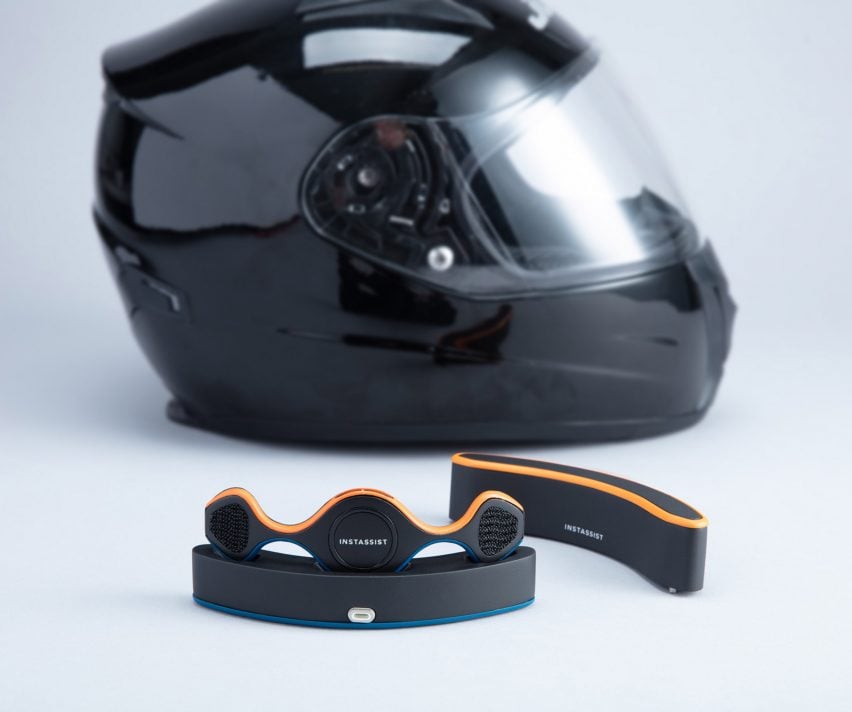
Instassist by Kristian Stoyanov
“Instassist is an Internet of Things (IoT) system operated through a device and an app designed to tackle delays in emergency medical service response (EMS).
“It provides the EMS with a contextual understanding of the situation, improving their efficiency and reducing their response time.
“The device registers motor accidents instantly by detecting abnormal deceleration and tilt through integrated accelerometers, triggering the GPS trackers. The victim’s location, health status and pre-uploaded medical background from the Instassist app are communicated back to EMS automatically after 90 seconds of user inactivity.
“This system uses a satellite GSM module to ensure connection on the most rural roads. It is installed inside the user’s helmet between the inner surface and the lining, which protects it from impacts and ensures durability.
“Despite motorcyclists only accounting for one per cent of the total road traffic, they account for around 18 per cent of total deaths – motorcycle accidents remain one of the most concerning issues in modern transportation.
“Combined with the app’s vast personalisation options, Instassist offers superior reliability and durability tailored to each user’s needs to ensure effective EMS response, allowing motorcyclists to ride safely and confidently.”
Student: Kristian Stoyanov
Course: Industrial Design and Technology
Tutor: Vanja Garaj
Email: kristian.stoyanov[at]outlook.com
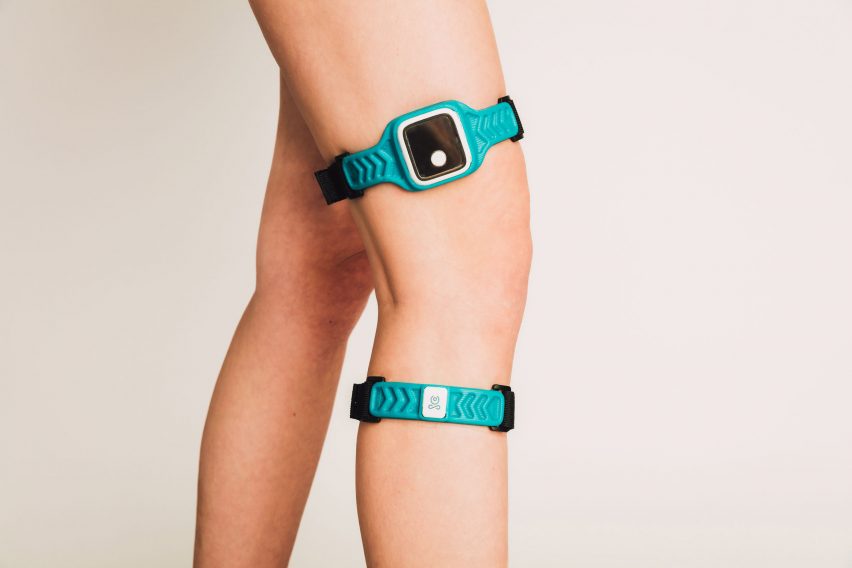
Biometria by Julita Napieralska
“Biometria aids with physiotherapy, providing live and guided feedback to patients performing prescribed routines.
“It provides practitioners with anthropometric data to guide patients on balance and speed, preventing injury and strain caused by an inaccurate approach to exercise and allowing them to adjust prescribed treatments remotely.
“It connects to an app which enables the user to visually understand what they’re doing, gamifying the experience and making it less stigmatic.
“Physiotherapy can be inefficient due to patient non-compliance and the lack of evidence-based practises available to practitioners to analyse and provide clinical reasoning to their patients.
“Patients often report that the process of receiving feedback is lengthy and prevents them from gaining sufficient guidance.
“The device is calibrated to each individual’s body and does not rush the user into exercising, ensuring they do not strain and cause further injury as recovery is equally as important as exercise in physiotherapy.”
Student: Julita Napieralska
Course: Product Design Engineering
Tutor: Yanmeng Xu
Email: Julita.d.napieralska[at]gmail.com
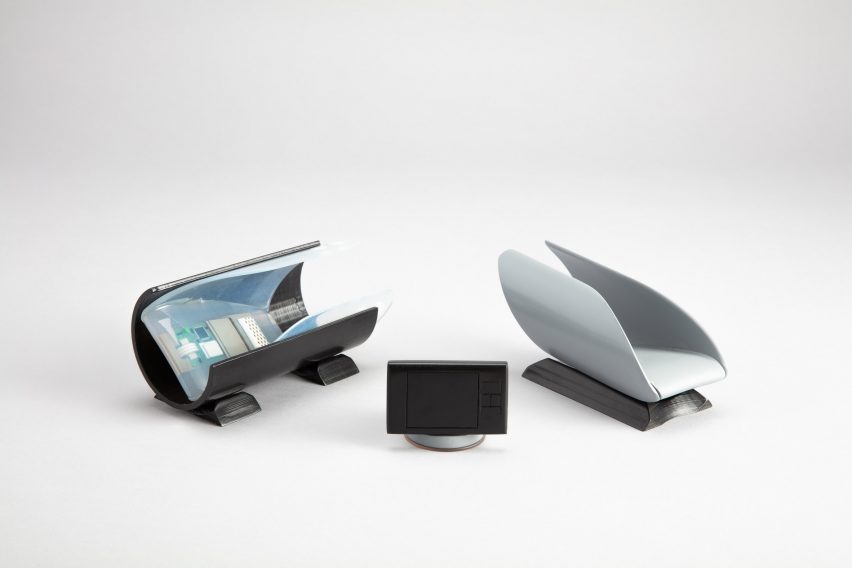
The Carbon Counter by Jack Percival
“This product measures how much carbon dioxide you produce while driving, utilising a sensor suite located in the car’s exhaust and the dial on the car’s dash.
“There is no other product that performs the same function while the car is in motion.
“While this product doesn’t directly impact emissions, it informs the user on how much they are producing, giving an exact number to show how they, as consumers, contribute to the issue.
“This offers the user the choice to decide how to move forward with the information. For example, they can compare it with other values, such as the yearly consumption of trees, to gain a better understanding of the values.
“This understanding will better prepare the user for potential restrictions, such as ultra-low emission zones (ULEZ), by categorising exactly how much carbon dioxide the car has produced within certain areas.”
Student: Jack Percival
Course: Product Design Engineering
Tutor: Yanmeng Xu
Email: jackwpercival[at]gmail.com
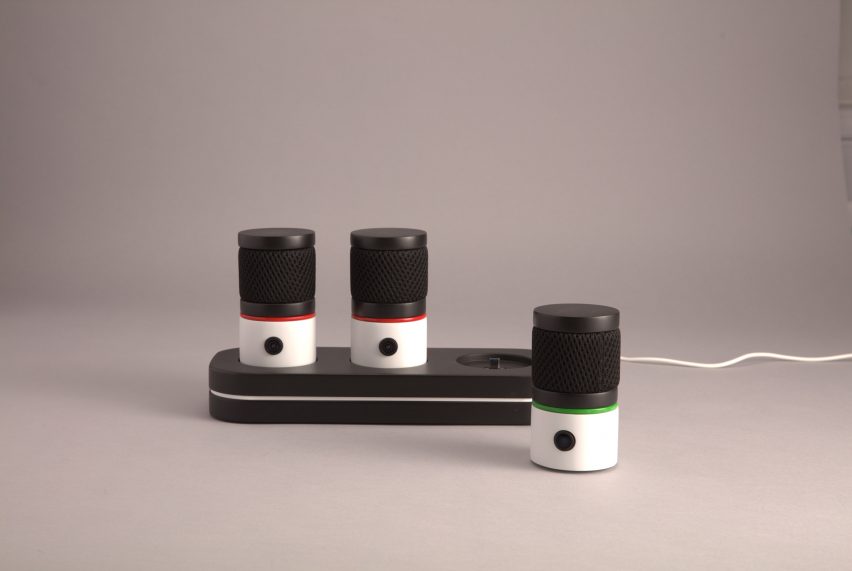
Ulti-Mutt Monitor by Jack Nash
“The Ulti-Mutt Monitor is a three-part portable device designed for general monitoring of the wellbeing of domestic dogs to improve their quality of life, focusing on separation anxiety.
“Using the app that pairs with the device, the user can monitor their dogs and intervene if necessary with a variety of options to comfort them, including music, voice audio and pre-recorded sounds.
“Each device has built-in sound activation that responds to barking, sending a notification to the phone app. The app connects to a camera feature that offers a live feed so the user can watch their dogs in real-time.
“Separation anxiety is a disorder seen in domestic dogs that leaves them feeling abandoned, resulting in distress, destruction and disobedience.
“This device is an affordable option for the average dog owner to monitor their dog’s behaviour when away from them and the home. The user can disperse the three monitors into different rooms for maximum visibility while the dog roams around the house during the day.”
Student: Jack Nash
Course: Industrial Design and Technology
Tutor: Joseph Giacomin
Email: jacknash[at]gmx.com
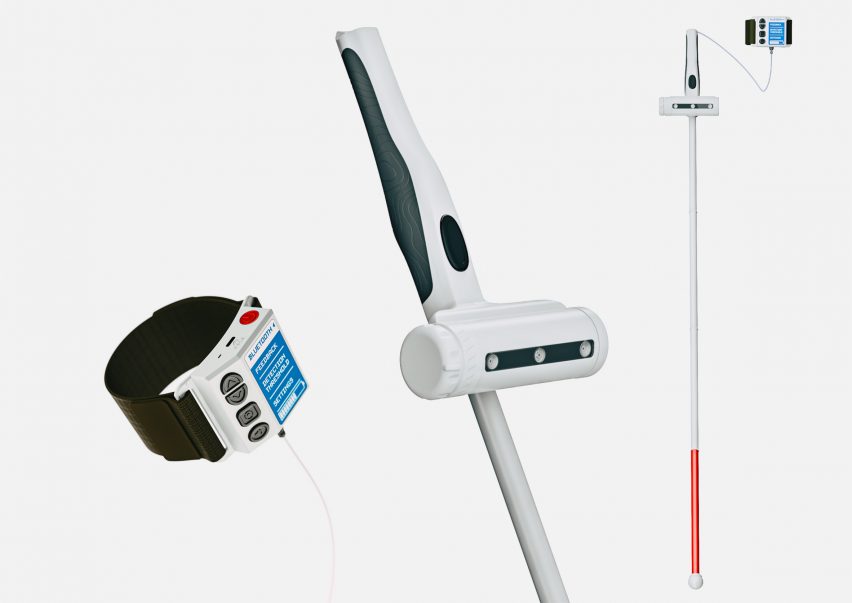
VisionAI by Alfs Pupols
“VisionAI is an assistive device for visually impaired individuals that utilises the latest advancements in computer vision technology to identify the speed and location of potential hazards at road intersections, informing the user of oncoming traffic.
“To activate the device, the user points the cameras towards the area of interest and presses the button on the handle. These adjustable stereo cameras are attached to a standard white cane and use binocular principles and artificial intelligence algorithms to acquire visual information.
“This information is then processed in a pack worn on the arm and received through either the haptic motor in the handle or their headphones – this can be chosen via the processor pack.
“According to recent statistics, 55 per cent of blind and partially sighted people report that their local roads are unsafe, and four out of every 10 visually impaired people could not make all the journeys they wanted to.
“Existing devices are often prohibitively expensive due to the multitude of sensors used and software development process. VisionAI uses open-source AI algorithms and only one set of stereo cameras with a smaller processor, making it a more affordable solution.
“Existing solutions also only offer limited flexibility when it comes to feedback options – VisionAI allows users to choose between audio or haptic feedback.”
Student: Alfs Pupols
Course: Product Design Engineering
Tutor: Federico Colecchia
Email: alfs.pupols[at]gmail.com
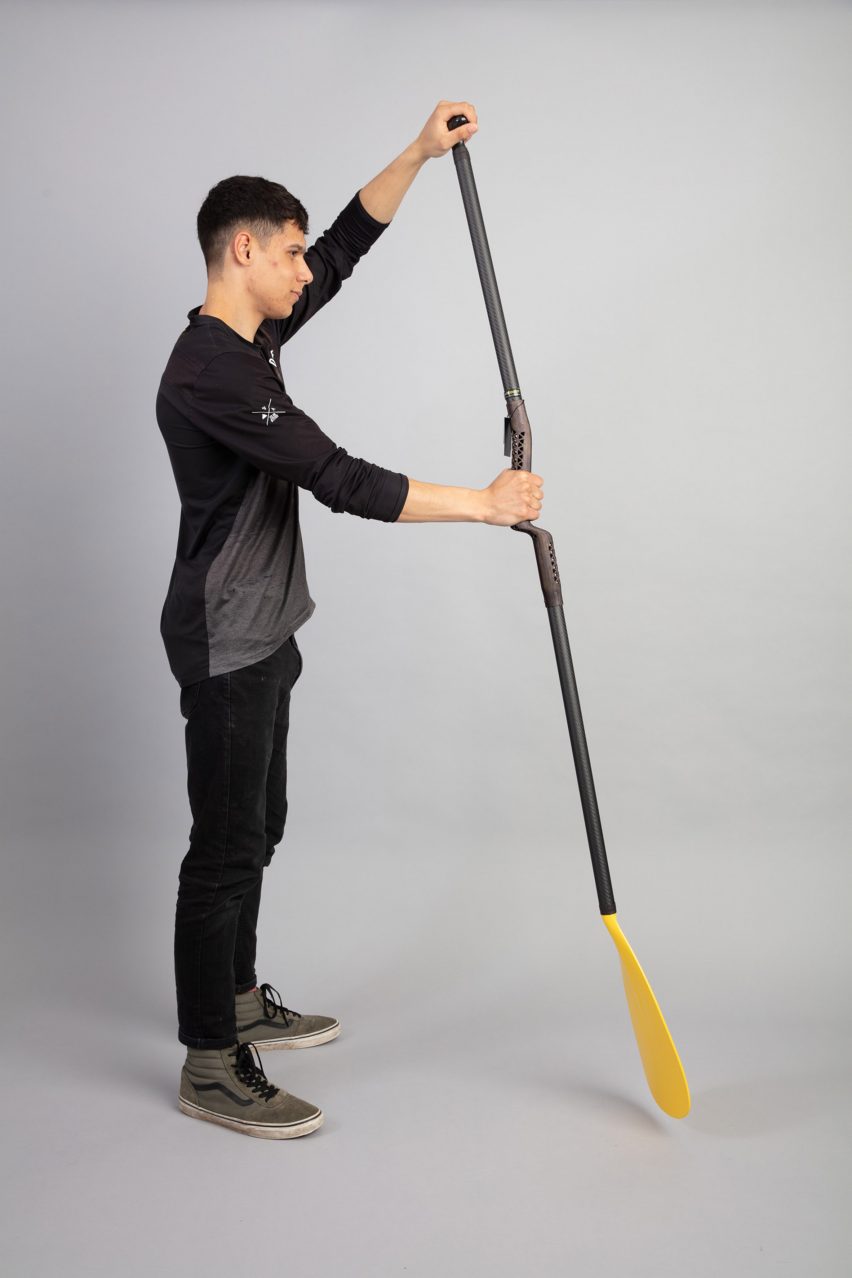
WaveMaster by Aaron Sylvester
“WaveMaster allows stand-up paddle boarders to paddle further and faster, utilising industry-leading technology and ergonomics to give beginners access to the wellbeing benefits of water sports.
“With over 25 per cent of adults in England deemed physically inactive, there has never been a more crucial time to encourage people to take care of their physical and mental health.
“Numerous studies have proven the connection between physical exercise and improved mental health, with as much as a 30 per cent lower risk of depression in adults that exercise daily.
“A 3D-printed mid-grip made from nylon 12 carbon fibre with an angled paddle allows beginners to increase their distance on flat water – these features are proven to improve ergonomics and technique.
“This grip provides an elliptical profile for comfort, ventilation to prevent moisture wicking, and customisability that allows the user to create a specific angle and flex to suit their preferences.
“Unlike any other paddle on the market, the WaveMaster system only weighs 700 grams and will retail for £155.”
Student: Aaron Sylvester
Course: Industrial Design and Technology
Tutor: Yanmeng Xu
Email: aaronsylvester15[at]gmail.com
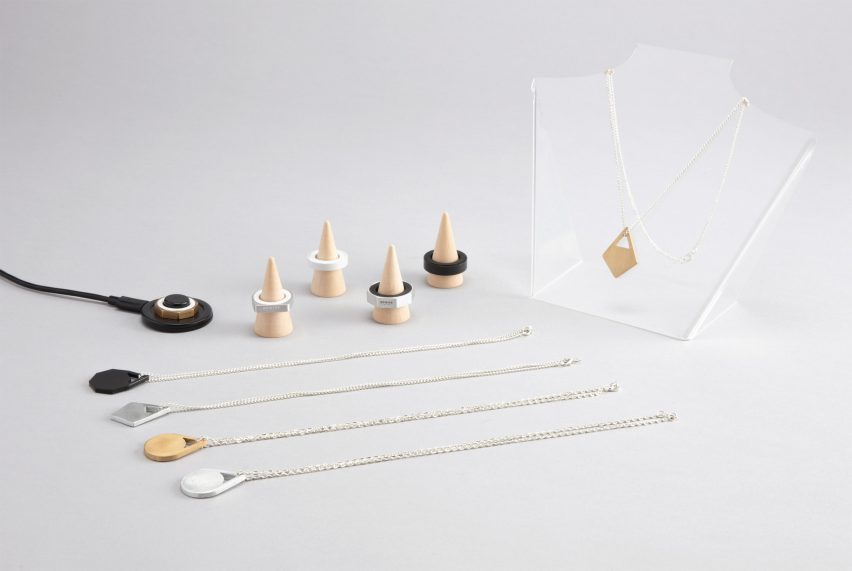
Rewire – BFRB Management by Jacob Osborne
“Rewire is a smart wearable ring and pendant that pairs with an app to help students manage body-focused repetitive behaviours (BFRB) by tracking finger movements and providing insights into triggers and trends.
“BFRB affects one in 20 people and can lead to serious physical and mental health impacts. It is a condition where individuals experience intense urges to pull, pick or bite hair, skin or nails, triggered by numerous things, including stress and anxiety from education.
“The ring tracks movement while the pendant uses near field communication (NFC) to connect with the ring, reducing false triggers by being connected.
“Rewire takes the form of jewellery to avoid attracting unwanted attention to the user and any stigma associated with BFRB. With an accompanying application, Rewire uses nudge theory and gamification to create behaviour change.”
Student: Jacob Osborne
Course: Industrial Design and Technology
Tutor: Arthi Manohar
Email: jacobosborne25[at]gmail.com
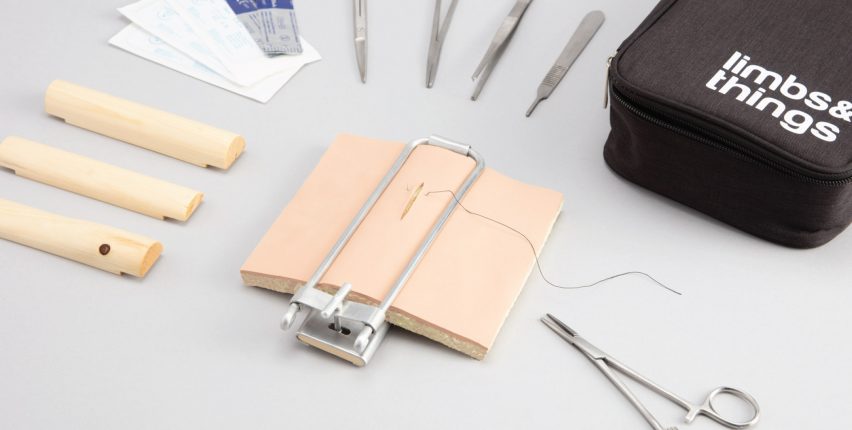
EcoStitch by Rebecca Mellor
“Due to the high production standards of silicone moulding and few options for recycling, an estimated 500 tons of silicone ends up in landfill each year.
“To redirect waste produced by a medical training device company, this project proposes a recycled silicone suture pad for practising sewing wounds.
“This project develops an innovative material that contains 60 per cent recycled silicone particles, formulated to imitate the soft texture of adipose tissue, otherwise known as body fat.
“The skin tissue layer is made from 100 per cent repurposed silicone offcuts from the factory, with a firmer silicone glue between the two sheets to replicate the properties of a dermis skin layer.
“The pad is anatomically accurate and holds sutures in a realistic manner, improving learning outcomes. On the pad’s base is a website address that connects the user to a free printable shipping label so it can be returned and recycled.
“The pad comes in a kit with surgical tools, needles and a stand, designed to improve user experience. It allows the user to adjust the tension on a wound by changing out inserts, enabling them to practice harder sutures such as deep tissue sutures.
“The stand incorporates eco-design principles and features recycled silicone feet and easy disassembly for recycling at the end of its life.”
Student: Rebecca Mellor
Course: Product Design Engineering
Tutor: Nadarajah Manivannan
Email: beccamellor[at]outlook.com
Partnership content
This school show is a partnership between Dezeen and Brunel University. Find out more about Dezeen partnership content here.
[ad_2]




